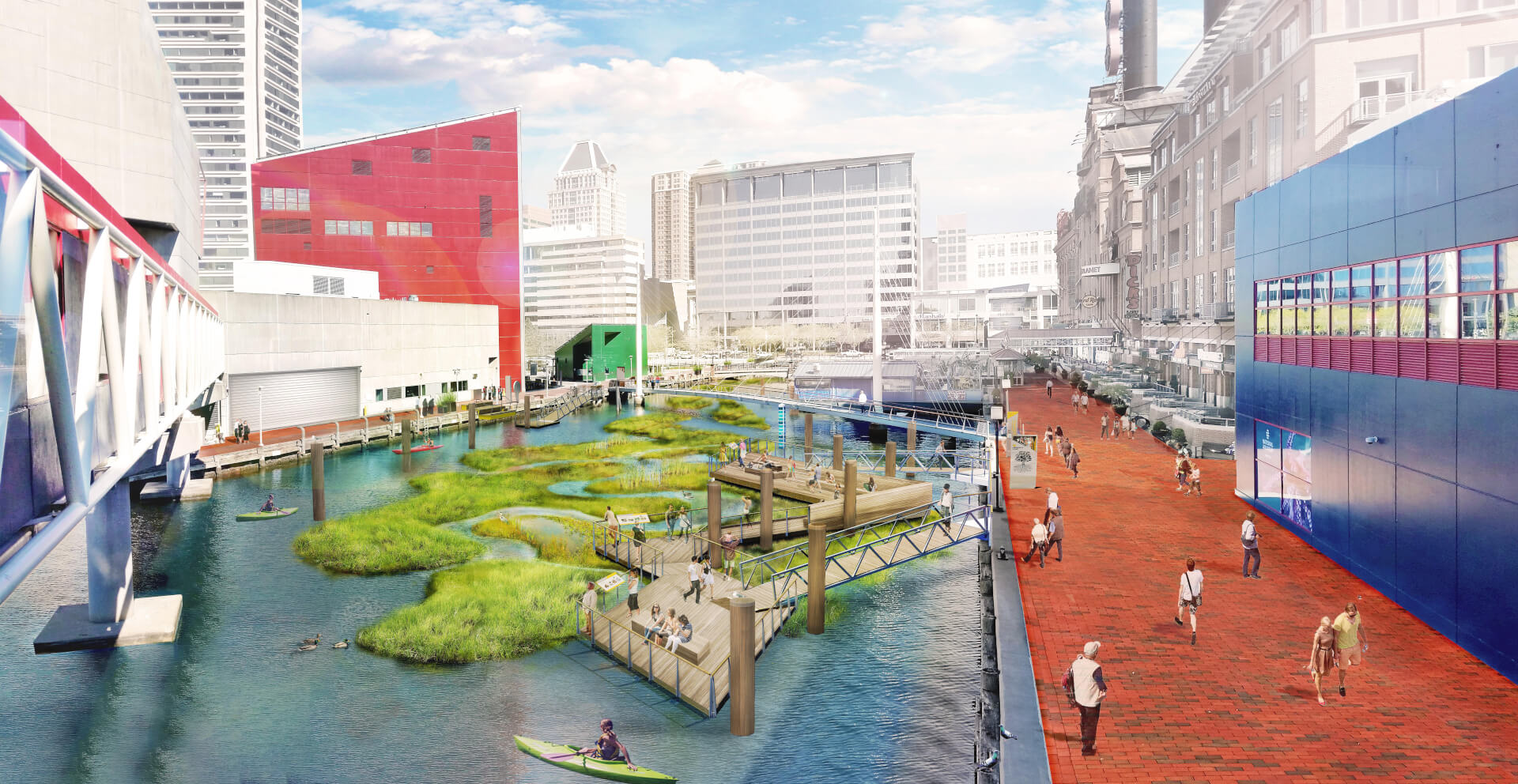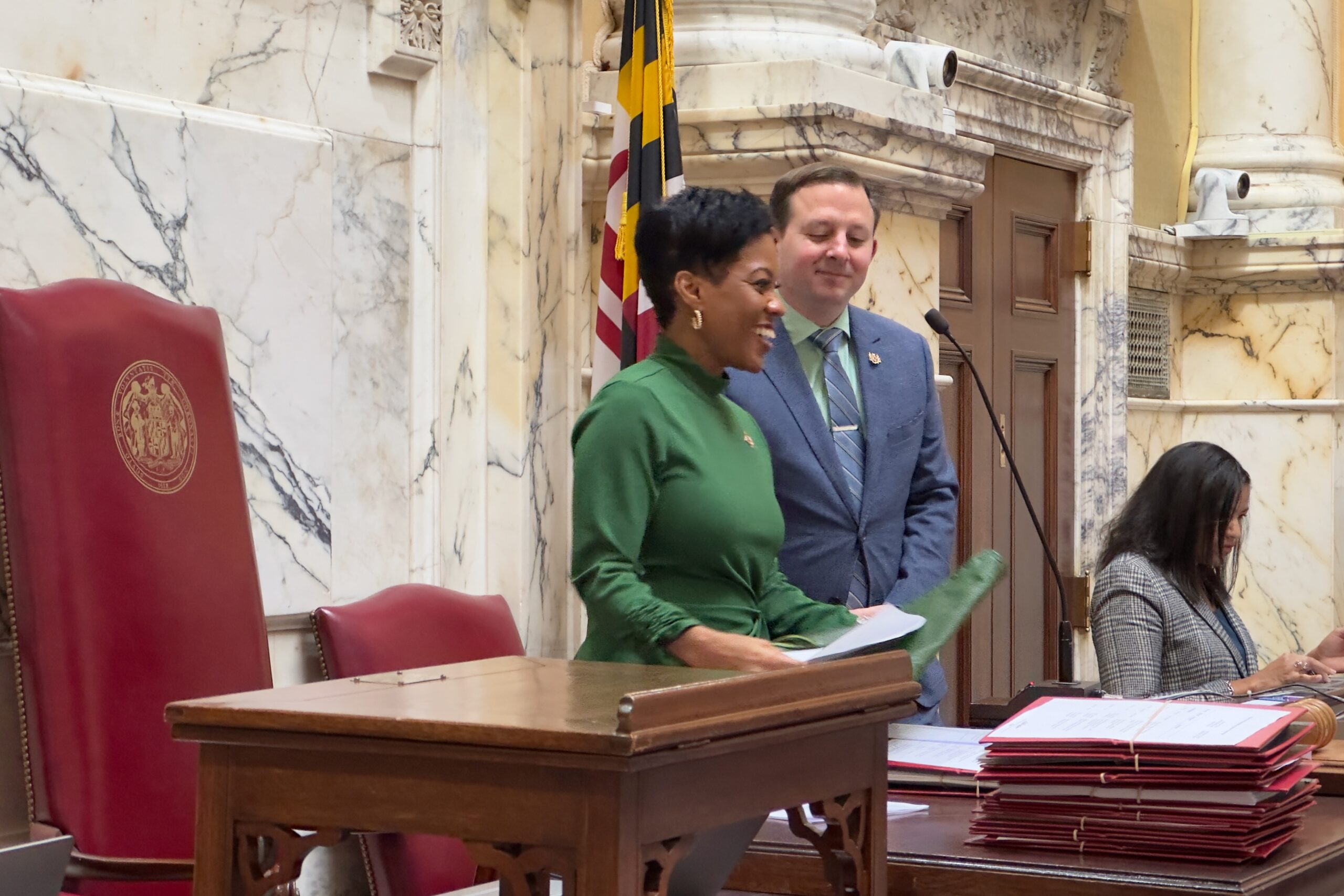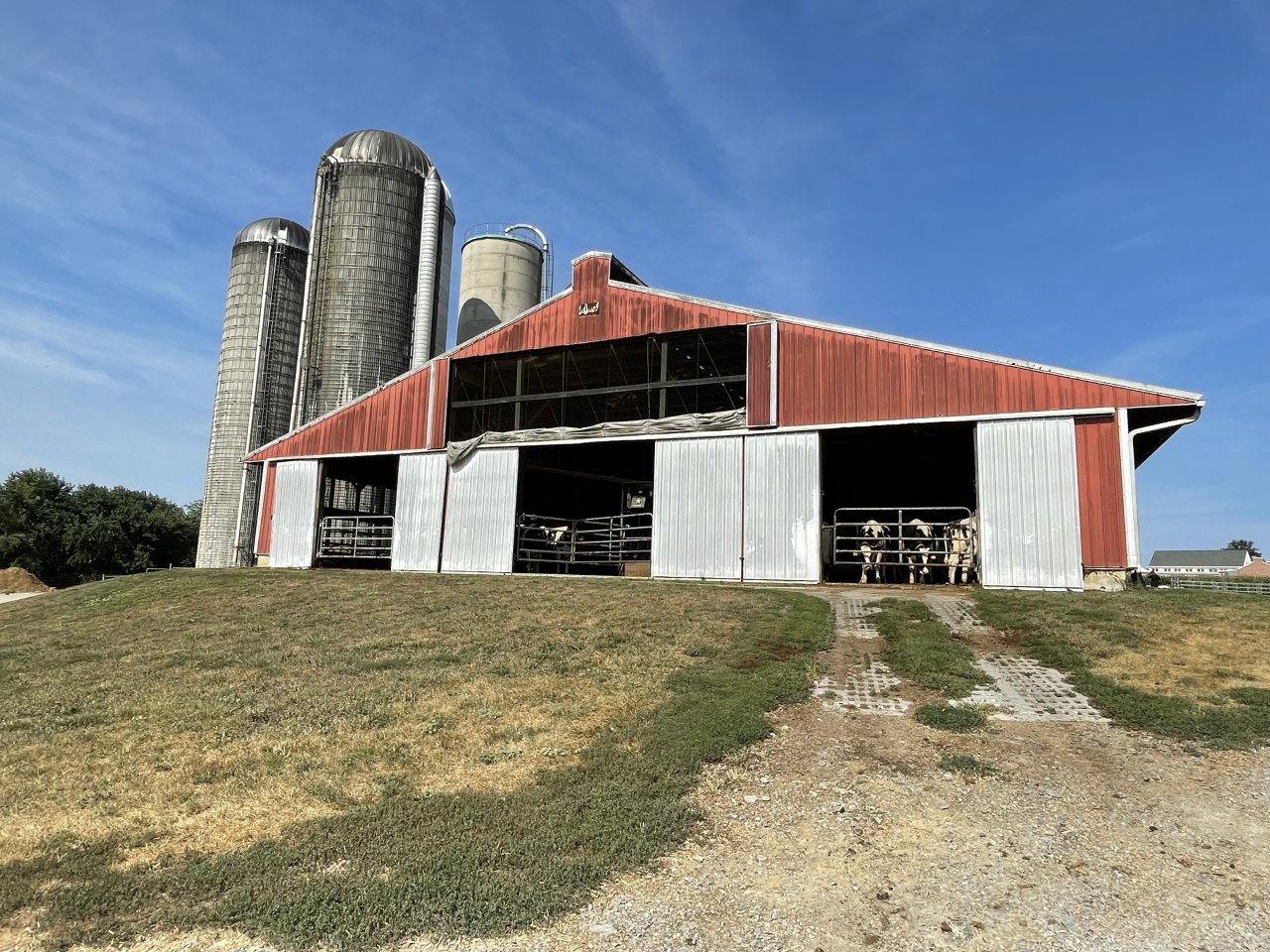Floating Wetlands Planned for Inner Harbor to Revive Urban Ecosystems, Clean Water

Editor’s note: This is the latest installment in Maryland Matters’ “Climate Calling” project. To read previous stories, click here.
The Inner Harbor was once lined with tidal salt marshes, only a few feet deep and teeming with aquatic life.
But Baltimore became a major industrial city by the early 19th century. Marshes were dredged out, replaced by piers and deepwater shipping ports with depths as great as 25 feet.
Now the National Aquarium is trying to recreate those rich tidal marshes of yore by building an oasis of floating wetlands at the aquarium’s campus off Pratt Street. It will be open for the public to visit when it is complete in about two years, said Jack Cover, general curator of living exhibits at the National Aquarium.
“What you have left is a completely altered environment with much of the ecological function kind of gone,” said Cover, who is overseeing the project. “We are in the post-industrial age now, and it’s time we reconstruct some of that original ecosystem and natural environment.”
“The Inner Harbor went through a renaissance when it became a tourist destination after the industrial age, but we’d like to also have a renaissance in the water,” he continued.
Floating wetlands can bring natural habitats back to the harbor, such as a nursery for hatching fish and a safe shallow place for blue crabs to shed their shells. They can also improve water quality and educate Baltimore residents and visitors about local waterways.
The goal is to bring the natural Chesapeake Bay tidal marsh habitat back to the Inner Harbor, help clean the water and inspire those who pass it, Cover said.
Cover has been maintaining a 400-square-foot floating wetland prototype for four years, testing the durability of materials in the Harbor and gathering information on what animals will inhabit this habitat to prepare for the aquarium’s larger project.
“It smells like a marsh, looks like a marsh and feels like a marsh,” Cover said.

Jack Cover, general curator of living exhibits at the National Aquarium, has been maintaining a 400 square-foot prototype of a floating wetland for the last four years in preparation for a much more expansive project expected to be complete in about two years. Photo provided by the National Aquarium.
Over the years, Cover has seen hooked mussels, small yellow and black striped blennies and naked gobies, which were previously “extremely uncommon” in the harbor. The small floating wetland has also attracted blue crabs, banded killifish, American eels, snapping turtles and birds — including great blue herons and black-crowned night herons, Cover said.
“I think the greatest benefit of these floating wetlands is providing an oasis of habitat in an otherwise inhospitable area,” said Alice Volpitta, Baltimore Harbor Waterkeeper of Blue Water Baltimore.
“There are industrial canals in the Inner Harbor — there’s no living or natural shoreline nearby, so it’s pretty bleak if you’re a turtle or a fish trying to hide from an osprey trying to eat you.”
For instance, blue crabs must shed their old shell to grow. But because it takes more than a day for their new shells to harden, blue crabs then are vulnerable to many predators that eat soft crabs, Cover said. In the wild, blue crabs move into shallow waters of marsh grasses to hide during their molting process, but these habitats no longer exist in the Baltimore Harbor. The floating wetlands can be a place for blue crabs to safely molt.
Wading birds such as black-crowned night herons usually hunt small fish in shallow waters of tidal marshes, and can do the same in shallow waters of the aquarium’s floating wetlands, Cover said. This helps recreate a tidal marsh food chain and ecosystem.
“The other day, there was a song sparrow singing here and I was like — that’s a great sound for the city,” Cover said.
Floating wetlands are also examples of how low-tech green infrastructure can be added to a waterfront city to help clean air and water, Cover said. Chicago, the District Wharf in Washington D.C. and Seattle similarly have installed floating wetlands to restore ecosystems once provided by marshes and natural shorelines.
Native flora planted on the floating wetland grow in harbor water. They absorb excess nutrients and pollutants from the water and pull carbon dioxide from the air.
“We’re belching out carbon dioxide while cutting down all things in nature that remove carbon dioxide, so there needs to be a course correction; we need to turn the ship,” Cover said. “Let’s start rebuilding that green infrastructure because right now, we are paddling full speed towards the waterfall.”
According to a 2020 report card by environmental advocacy group Blue Water Baltimore, the Baltimore harbor scored 50% in water quality and the Patapsco River, which flows into Baltimore harbor and eventually into the Chesapeake Bay, scored 53%.
Building floating wetlands to restore aquatic habitat is also included in Baltimore’s 2019 sustainability plan.
However, nutrient uptake depends on many factors, such as the type and number of plants, how polluted the water is and the temperature, said Andrew Lazur, a state water quality specialist for the University of Maryland. Floating wetlands are typically not the main tool used to reduce nutrient pollution in water, he said.
“Certain plants are fairly effective, but is it the answer for nutrient pollution? Absolutely not — it’s one of the tools that we have,” Lazur said. “The best thing we can do for nutrient reduction is to improve wastewater treatment plants, septic systems and reduce nitrogen use in agriculture.”
But “any contribution is a benefit,” he continued.
Researchers at the University of Maryland Center for Environmental Science are currently exploring the efficacy of floating wetlands in removing nutrients from the water, including in areas like the Inner Harbor.
Existing research does show that floating wetlands reduce pollution, so it is reasonable to think that the more floating wetlands built in the Inner Harbor, the less pollution there would be, Lazur said.
The National Aquarium plans to expand its small pilot project to a one-acre network of floating wetlands and piers for visitors to walk along; about a quarter of the project will be floating habitat. The aquarium has already raised $12.4 million for the $14.5 million project. Donors include the City of Baltimore, the Whiting-Turner Contracting Company and CFG Bank — the largest donor.
But factors like the COVID-19 pandemic and funding constraints contribute to the project’s long timeline, Cover said. However, “the longer the testing period is of a prototype, the more you learn from it,” he said. Weather is different every year, so it is important to test the prototype in extreme weather and storms, he continued.
Floating wetlands also provide Baltimore residents and visitors an opportunity to learn about the Chesapeake Bay and build relationships with their local waterways. “That’s something we need for people to care about — restoring the harbor and the Patapsco River at large,” Volpitta said.
“There’s this terrible perception people sometimes have about our harbor — that it’s toxic or lifeless — and that’s just not true,” she continued. “The reality is that the harbor is alive, and so by bringing some of that life up to the surface where people can see it, it can prove to people that these are waterways that deserve our protection and our attention.”
Because the Chesapeake Bay is a big part of Maryland’s heritage, the aquarium’s floating wetlands can have a tremendous educational value, Cover said. Learning more about the harbor could motivate people to make small changes in their lives such as planting more trees to expand green infrastructure or advocating for better environmental legislation.
“I think it’s a great way to reinforce the idea that we all contribute to the quality of the Bay and protect habitats,” Lazur said.
In 2012, Dan Naor, a chief operations officer of GrandView Aviation in Baltimore, proposed a similar floating wetland project in that would cover 1.6 acres of open water in the Harborview marina off Key Highway, but the project was not built.
Maryland Environment Secretary Ben Grumbles said he supported floating wetland projects and is excited about possibilities that could come with it to help the state meet its clean energy goals.
“We support efforts to place floating wetlands in specific locations, such as the Inner Harbor and the Anacostia River, as important tools for environmental education, improved habitat and water quality, and climate resiliency. Floating wetland projects can also open the door to floating solar arrays to help us meet our climate and clean energy goals,” Maryland Environment Secretary Ben Grumbles said in a statement.
Last week, Blue Water Baltimore reported that two of Baltimore’s wastewater treatment plants have been pumping millions of gallons of partially untreated sewage into the Patapsco River a day due to “maintenance deficiencies.”
“If nobody is enforcing the terms of those permits, or if the lion has no teeth, we could install all the floating wetlands that we could pack into the harbor, and it wouldn’t make much of a difference, if we can’t stop pollution at the source,” said Volpitta of Blue Water Baltimore.
Editor’s Note: This story was updated to clarify that the National Aquarium’s floating wetlands would cover about a quarter acre of water.





 Creative Commons Attribution
Creative Commons Attribution